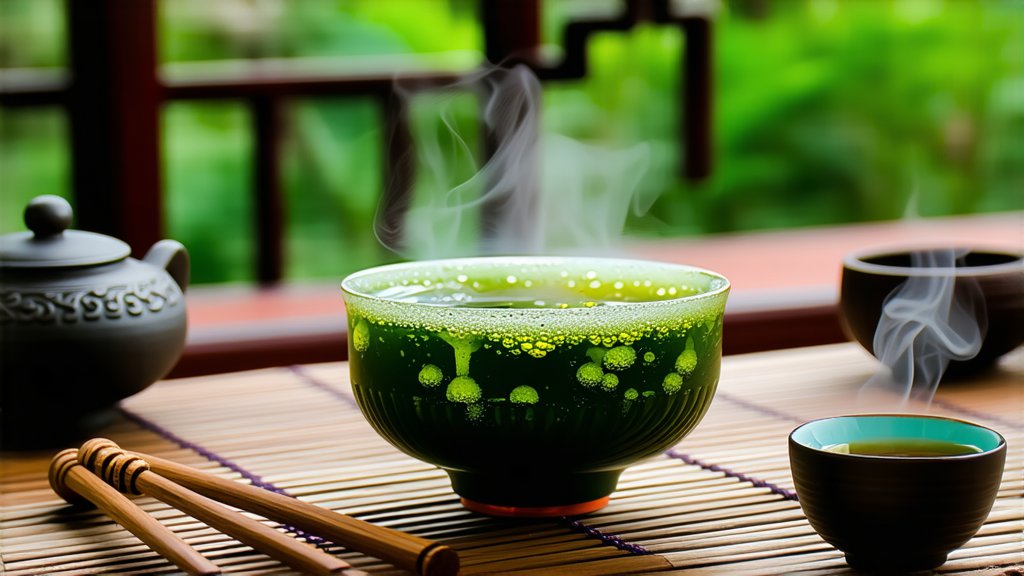
Tieguanyin, often referred to as the "Iron Goddess of Mercy," is one of the most revered varieties of oolong tea hailing from China. This exquisite tea has a rich history that spans several centuries, originating in the Anxi county of Fujian province. It stands out not only for its unique flavor profile but also for its intricate production process and cultural significance. In this article, we will delve into the history, types, production methods, and tasting techniques associated with Tieguanyin, providing a comprehensive understanding of why it holds such an esteemed place in the world of tea.
Historical Background
The history of Tieguanyin dates back to the early Qing Dynasty (1644-1912). According to legend, the tea was discovered by a poor scholar named Wei Yin who found a divine dream instructing him to create a new type of tea. He followed the instructions and produced a tea that became immensely popular, both for its quality and its supposed divine origin. By the mid-18th century, Tieguanyin had become a favorite among the imperial courts and the elite, earning its nickname "the Iron Goddess" due to its resilient nature and high-quality leaves.
Types of Tieguanyin
Tieguanyin comes in various grades, each offering a distinct flavor and aroma profile. The primary classifications are based on the elevation at which the tea is grown, the time of harvest, and the meticulousness of the processing techniques. Here are some notable types:
- High Mountain Tieguanyin: Grown at elevations above 600 meters, this variant boasts a more refined taste and floral aroma due to the cooler climate and fertile soil.
- Authentic Tieguanyin: Harvested from the original regions near Anxi, these teas are known for their robust flavor and long-lasting aftertaste.
- Organic Tieguanyin: Produced without synthetic pesticides or fertilizers, organic variants appeal to those seeking natural and sustainable options.
- Seasonally Harvested Tieguanyin: Depending on the season, the tea can vary significantly. Spring-harvested teas are usually considered the finest due to the mild weather and tender leaves.
Production Methods
The production of Tieguanyin is a complex and labor-intensive process that requires skill and precision. Here's an overview of the steps involved:
- Plucking: Tea leaves are hand-picked, typically selecting only the top two or three leaves and a bud. This ensures that only the youngest and freshest parts of the plant are used.
- Withering: The freshly picked leaves are spread out in a thin layer to wilt under the sun or indoors. This step reduces moisture content and prepares the leaves for subsequent stages.
- Fixation: The withered leaves are then subjected to high temperatures to halt oxidation. This step is crucial for developing the unique flavors and aromas characteristic of oolong tea.
- Rolling: The fixed leaves are rolled to form tight pellets or balls, which helps in further oxidation and releases essential oils.
- Oxidation: The rolled leaves are left to oxidize partially, a process that can take several hours. The degree of oxidation determines the final flavor profile of the tea.
- Roasting: The partially oxidized leaves are roasted to remove any remaining moisture and to develop a rich, toasty aroma.
- Sorting and Grading: The final product is sorted based on quality, size, and appearance before being packaged for sale.
Tasting Techniques
Tasting Tieguanyin is an art form that involves multiple sensory experiences. Here's how you can fully appreciate this exceptional tea:
- Preparation: Use a Yixing clay teapot or a Gaiwan (a traditional Chinese lidded bowl) for brewing. These vessels help enhance the tea's natural flavors.
- Water Quality: Use filtered or spring water heated to around 90-95°C (194-203°F). The quality of water can significantly affect the taste.
- Leaf Quantity: Typically, use about 5 grams of loose leaves per 150 ml of water. Adjust according to personal preference.
- Infusion Time: For the first infusion, steep for about 30 seconds to 1 minute. Subsequent infusions can be longer, usually increasing by 10-15 seconds with each brew.
- Aroma: Before tasting, inhale the aroma deeply. High-quality Tieguanyin should have a fragrant, floral scent with hints of orchid and magnolia.
- Taste: Sip slowly, allowing the tea to coat your palate. Notice the balance between sweetness and bitterness, and pay attention to the smoothness and length of the aftertaste.
- Appearance: Observe the color of the brewed tea, which should be a bright golden-green to light amber. The leaves themselves should unfurl gracefully, revealing their full shape.
- Feel: Pay attention to the texture of the tea in your mouth; it should feel silky and smooth without any astringency.
Cultural Significance
Tieguanyin is not just a beverage; it embodies a rich cultural heritage and plays a vital role in Chinese social customs. The preparation and consumption of this tea are often ritualistic, involving elaborate ceremonies that emphasize mindfulness and appreciation. The Gongfu tea ceremony, in particular, is a practice where every step is performed with precision and care, reflecting respect for both the tea and the people sharing it.
In conclusion, Tieguanyin is more than just a type of oolong tea; it is a symbol of Chinese tea culture and tradition. Its intricate production process, diverse varieties, and unique flavor profile make it a favorite among tea enthusiasts worldwide. Whether you're a seasoned connoisseur or a curious beginner, exploring Tieguanyin offers a rewarding journey into the depths of Chinese tea artistry.